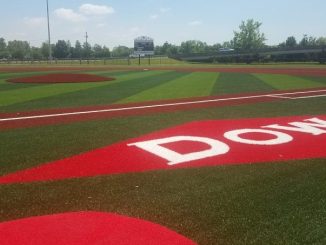
With 10 Bonnet Carre’ Spillway openings under his belt, local environmentalist Milton Cambre recently told fourth-graders at Norco Elementary School not to worry about animals like deer and hogs displaced by the Mississippi River flood waters.
“Soon as the water recedes, they will return,” Cambre said of the wildlife seeking higher ground from the spillway opening that started Sunday to divert floodwaters from heavy rain. Norco Elementary teachers told Cambre they’d already seen foxes in their area, which borders the spillway. “It’s amazing how they get displaced, but there will be a whole lot more silt there.”
This is good, he said, particularly as the waterway’s reservoirs have greatly diminished the nutrient-rich silt supporting aquatic life in the spillway, and the boost promises better fishing.
Cambre expects a substantial increase in silt with this kind of major flooding, as well as it improving water quality in Lake Pontchartrain.
Fishing will improve along with an anticipated bumper crop of American shad, a herring-like fish that enters rivers to spawn, he said.
Cambre also believes crawfishing will improve but it may no be what’s been seen with past spillway openings. He’s observed lower crawfish numbers in area waters in recent years.
It’s why, as soon as spillway waters recede, he’s going to check on the crawfish.
“I will be out there,” he said of going out on the spillway to study their population.
Cambre isn’t the only one expressing concern over the crawfish population, as well as the prospect of a much-anticipated crawfish boom that accompanied the 2011 spillway opening. He doesn’t know what’s behind the diminishing population, but he’s hoping his continual observation will identify potential causes.
Greg Lutz, crawfish researcher with the LSU AgCenter says it’s too early to tell if there will be “a big, wild harvest of crawfish” with the spillway opening, but these waters tend to be brackish and that isn’t conducive for crawfish.“The thing about crawfish is it’s a year-round cycle,” Lutz said. “With crawfish in the ground, they wait until autumn and then, when the rains come, that gets them moving. As waters go up that creates more habitat for them, but if the water hasn’t been high in the last two to three years there may not be many crawfish there.”
Lutz said high water doesn’t mean there will be crawfish out there because it’s been dry for too long.
Crawfish numbers will rely more on what happens in the Morganza Floodway and Atchafalaya Basin, although the Corps has since indicated it may not be opened.
Spillway flooding will likely have more impact on the area wildlife.
Jimmy Erst, biologist with the state Department of Wildlife and Fisheries’ Deer Management Assistance Program (DMAP) said the flooded spillway will have significant impact on wildlife.
“The deer there will be pushed out into the surrounding areas, and small game like rabbits and squirrels will be displaced depending on how fast the water rises,” Erst said. While there could be some mortality with ground dwelling animals, he said they will rebound quickly.
Erst advised the public avoid interaction with displaced animals such as feeding them because they will be stressed about being in unfamiliar territory. They will find food with an estimated 7,000 acres of habitat nearby.
“It’s important that folks leave them alone,” he said. “They may see deer in places they don’t normally see them. They’ll find a place to dwell and when the water recedes, those deer will go back to where they came from. We’ve seen that time and again.”
The hunting season is closed at the spillway, but no changes have been made to the season outside the area. The Corps, which manages the spillway, is monitoring the site.
Erst said it won’t be unusual to see coyotes because they are everywhere.
“They’re the most adaptable animals that we’ve got out there,” he said. “People may see more coyotes than normal, but they typically live around them and don’t realize it. They keep to themselves. They really pose no danger to people, but people are overly afraid of them. We’ve never had a coyote attack a person.”




Be the first to comment